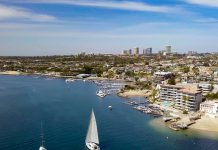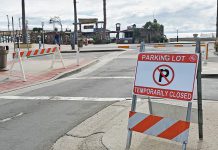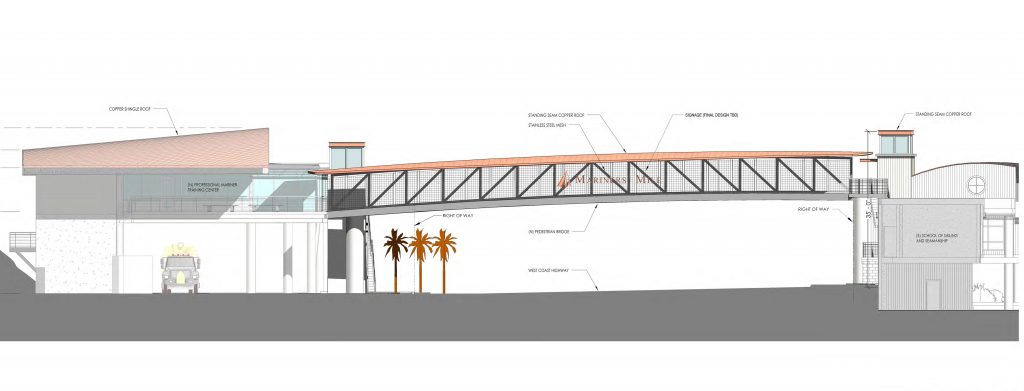
— Rendering by HPI Architecture/courtesy CA Coastal Commission
Following a recent state board approval, a footbridge connecting two maritime-related facilities and open to the public for better access to the water is on its way to crossing a major thoroughfare in Newport Beach.
California Coastal Commission voted 11-0 on June 7 in support of Coast Community College District’s application to construct a pedestrian bridge over West Coast Highway connecting two of the college district’s facilities at the east end of Mariners’ Mile.
The bridge will connect the existing Orange Coast College School of Sailing and Seamanship located at 1801 West Coast Highway and the planned OCC Maritime Training Center, which will be located across the road at 1700 West Coast Highway.
Brad Avery, OCC School of Sailing and Seamanship director and Newport Beach city councilman, said this week that they are very happy with vote.
“We’re looking forward to getting the project rolling,” Avery said. “It’s been more than 15 years in the making.”
It took a long time to acquire the property across the street and do all of the pre-planning, he explained. They purchased the land from Orange County Sanitation District last year.
Plans for the bridge describe it as 12 feet wide by 120 feet long, and approximately 10 feet high from the bridge deck to the canopy.
In addition to stairways, it would include 35-foot elevator shaft towers on each side (the highest points of the structure), which complies with the city’s Local Coastal Program’s shoreline height limitations.
Clearance from the bottom of the pedestrian bridge to the roadway surface will vary between 19 feet to 20.2 feet, according to the CCC staff report.
Commissioners approved the project with special conditions, as recommended by Coastal staff, which include: Maintaining public access to and over the pedestrian bridge; signage that denotes such public access; submittal of the final, approved Caltrans’ Traffic Management Plan and Encroachment Permit (which is required since the project crosses a state highway); compliance with construction best management practices; and assumption of risk, waiver of liability and indemnity.
According to the CCC staff report, signage – as described in the list of special conditions – will be at least “two full size sets of a Public Access Signage Plan, which indicates the availability of the on-site pedestrian bridge to the public” to use to cross the highway.
The footbridge will provide better access to the water for the public, Avery noted.
“The benefit will go beyond our school,” Avery noted. “(Members of the public will be able) to go across the highway without having risking their lives on PCH.”
Current pedestrian access across West Coast Highway is located at Tustin Avenue, approximately 0.3 miles to the west, and at the Balboa Bay Club, approximately 0.2 miles to the east
“It will be open to the public, literally and physically,” Avery continued. “Anybody in the community will be able to use it.”
With other local developments, they also hope the boardwalk will extend to their facility and allow pedestrians more “walkability,” as referenced in the city’s Mariners’ Mile Master Plan.
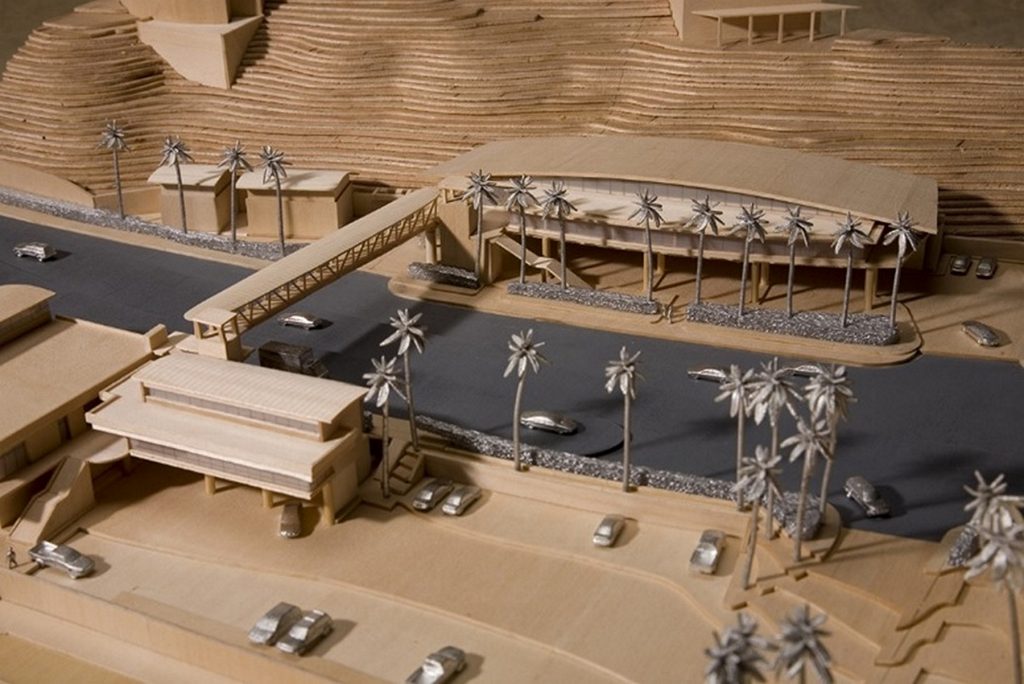
— Rendering courtesy CCCD
The planned 10,000-square-foot Maritime Training Center will be home to OCC’s growing professional mariner program.
Students come from Newport Beach and all over Orange County to learn more about careers in the maritime industry, Avery noted.
“It helps students consider the full range of employment opportunities on all kinds of vessels,” he said. “They’ll be close to the water and boats when they want to put what they learn in the classroom to practical use.”
The MTC will also include 37 parking spaces and a reconfiguration of docks to accommodate safety considerations and larger maritime vessels. The facility will have hands on education room, and ship bridge and radar simulators.
“The project represents a huge move forward for our whole mariner program,” Avery said, including the adult education and community boating programs, so the new classrooms and parking will be helpful. “It’s a real boon for us in that regard.”
The project, managed the Coast Community College District, is about $14 million total cost, Avery said.
They are not quite done with all the required approvals though.
Officials hope to get approval from Caltrans within the next year and are “reasonably confident” they will get it. They shared the project with the state department about five years ago and have been well aware of Caltrans requirements during the process, Avery explained.
“In the meantime, our design team is moving ahead,” Avery noted, and they are about half done with that step.
Construction could start as soon as one year from now. The project timeline on the CCCD website notes the maritime academy expansion completing in March 2019
They also shared their plans with the city, Avery said. Although, since it’s an California educational facility, it does not need City Council approval. Although they still need approval from the Division of the State Architect, which probably won’t happen until fall.
Officials hope to have “Mariners’ Mile” written across the bridge, but that also has to be approved by Caltrans.
There are fewer and fewer marine-related businesses or uses on Mariners’ Mile, Avery pointed out, so the maritime training center will be a good cornerstone to bring it back. It will be the gateway into the nautical named stretch of highway.
“It’s really fitting that the bridge will be the entrance from the east side to Mariners’ Mile,” Avery said. The physical link between the sailing school and maritime training center – that future mariners will use – will be “the eastern gateway into Mariners’ Mile.”
For more information, visit occsailing.com, cccd.edu and coastal.ca.gov.
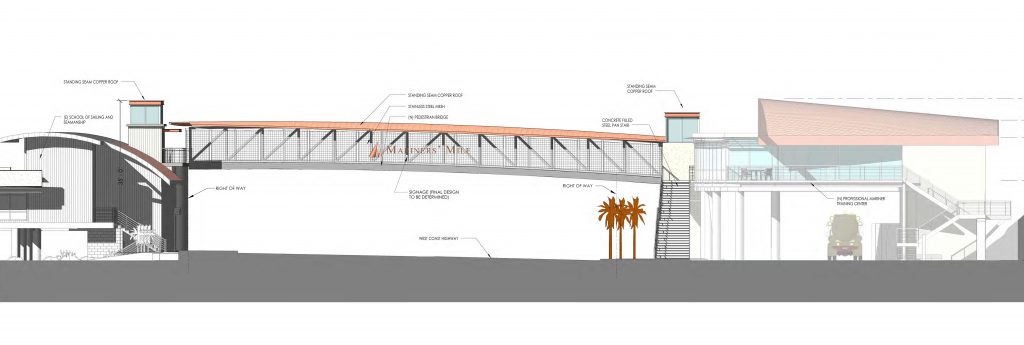
— Rendering by HPI Architecture/courtesy CA Coastal Commission



